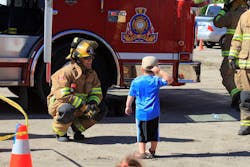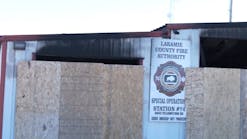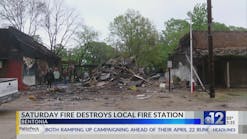When it comes to fire prevention, the province of Ontario, Canada, is leading the way. Thanks to several decades of forward-thinking fire marshals, the province’s response model has been turned upside down. Talk to fire officials, and the mantra is the same: the first line of defense is public education, the second line, fire safety and code enforcement, and the third, fire suppression.
That’s a strong message from an industry where the heroism of fighting fires is often the focus rather than the subtlety of community outreach. And it certainly appears to be working.
Ontario’s fire death rate was 30.9 per million in 1980 and 6.0 per million in 2014. That’s an 81% reduction in 35 years, nearly 10% higher than in the United States.
"The Ontario Fire Marshal’s office has always tried to look at the need to make sure we were meeting our mandate," former Ontario Fire Marshal Ted Wieclawek said. "From the time it was established in 1916 to investigate property losses from fire, to bolstering preparedness efforts in the Cold War era, to establishing and enforcing proactive fire codes during the economic expansion of the last few decades, we have always tried to be at the forefront."
“These days, it’s a more formal process,” Wieclawek added. "The emphasis is on risk assessment and gap analyses. We help municipalities gather data, define their fire risk and identify the ways they can improve." One of the most significant indicators is that many deaths continue to occur when there is a response time of five minutes or less. This drove the fire marshal’s focus on education and engineering.
“We knew we had to do things differently,” Wieclawek said. “We were losing people despite the fact that our firefighting efforts were meeting and/or exceeding operational standards. The emphasis on prevention just made sense."
Legislation that puts prevention first
Convincing government leaders that fire safety meant more than a fire truck with guys in gear took some work, but armed with the evidence, Ontario legislators passed The Fire Protection and Prevention Act (FPPA) in 1997, sweeping and innovative legislation that required municipalities to provide fire safety and public education. Under the legislation, every municipality must establish a program that includes public education with respect to fire safety and certain components of fire prevention, and provide other fire protection services it may deem necessary according to their needs and circumstances.
The legislation was not without controversy. Many of Ontario’s 450 fire departments were concerned that they did not have the capacity or resources to meet the new public education mandates. To answer that concern, the law also created the Fire Marshal’s Public Fire Safety Council, an independent not-for-profit corporation, chaired by the fire marshal, to allow for private funding and support of fire education efforts.
The council’s objectives, mandated by this law, are:
- Promote fire safety throughout the province;
- Produce and distribute materials for public education with respect to fire safety;
- Provide or endorse training, education and fire prevention activities;
- Facilitate and coordinate the public exchange of information and ideas on matters of fire safety;
- Solicit, receive, manage and distribute money and other property to support the objects described;
- Enter into partnerships and agreements with persons or organizations in the private sector or with public bodies or organizations to further the objects described;
- Advise the Fire Marshal on matters of fire safety.
Coordinated fire messaging
The FPPA and the creation of the council represented a key change in Ontario’s focus on public education.
"The council brings stakeholders from the business community, insurance industry, public safety and others who all help the fire marshal and the fire service get the message out,” said Art Pullan, executive director of the council and former Chief of Fire Prevention, Public Education Division of the Brockville, Ontario, Fire Department. “We can raise money, create programs and promote activities that are easily accessible and affordable to any department that wants them.”
The council, for example, has a “Swing Into Summer Safety” partnership with the Toronto Blue Jays. Each year the team makes discount tickets available to schools and community groups for special game days, promotes fire safety throughout the games, and provides players as fire prevention spokespersons. They also print 150,000 sets of baseball cards of Blue Jays players with fire safety messages on each. These are the kind of popular promotions that are readily available to departments, and ones that would be difficult for individual departments to obtain on their own.
Another popular program is the "12 Days of Holiday Safety," coordinated with radio stations across Ontario. Fire department personnel can participate with their own local station, going on-air and sharing the fire safety messages while the stations do things like offer giveaways for listeners who call in and answer safety questions. It’s a great way to ensure that the safety messages are consistent, repetitive and heard throughout the province.
“Instead of 400 departments trying to do their own thing, we have a coordinated, focused, highly visible approach to public education,” Pullan says. “It’s a win-win. Fire departments get more bang-for-the-buck by participating in our programs, and council sponsors are recognized province-wide for the support they are giving to their customers and to improving public safety.”
Thanks to Council partners like Kidde, Canadian Standards Authority (CSA), Technical Standards and Safety Authority (TSSA) and the Electrical Safety Authority, the council is also a distributor of NFPA safety materials. It can purchase materials in bulk and pass the savings along to individual departments. The council was able to donate a “Fire Power” kit, usually $400 each, to every participating fire department. Since its inception, Pullan estimates that the council has provided over $25 million in programs and materials to the Ontario fire service.
And in an exciting recent development, the council will now serve all Canadian provinces. As of September 2014, fire departments across Canada will have access to the same public education resources. The impact of this development could be enormous, as proven, tested and coordinated messaging makes its way across the country.
Toronto is meeting the changing fire risk
Nowhere can Ontario’s changing fire service model be seen more clearly than in its largest city, Toronto. A recent Toronto Fire Services (TFS) recruit class was made up of 38 new firefighters who will serve in public education and fire prevention, with 25 more due to join them over the next three years. Seven of these new recruits will be assigned to public education, which currently consists of a division chief, district chief, four captains and 16 educators. Add to that the 150 fire safety inspectors that work out of many of Toronto’s 82 fire stations, and you have a department that sends a clear message both internally and externally: the best way to fight fires is to prevent them from ever happening.
“We need to be prepared to meet Toronto’s changing fire risk,” said TFS Public Education Division Chief Stephen Welowszky.
“In 10 years, one-third of our population—1 million of our 3 million residents—will be over the age of 55. Toronto is facing unprecedented growth, with 138 high-rise buildings under construction, close to 50,000 residential units under construction, and a population growth of over 26% expected by 2024. It would be irresponsible not to focus on fire prevention and fire safety.”
The TFS’s public educators will be deployed accordingly. The TFS meets regularly with city councilors and community groups to identify the best way to reach out to senior citizens, immigrants, and other vulnerable populations. In addition to their robust school outreach, in which every school is provided with fire safety resources for teachers to use to teach valuable fire safety lessons and meet the expectations of the provincial curriculum, public educators will go anywhere they can get an audience to convey the importance of the public’s role in keeping the community safe.
They will also work with inspection staff to focus on fire-code education and enforcement, which Welowszky sees as a critical partnership. “When more of our firefighters are out in the community, we have more of an opportunity to see things that others don’t,” he said. “There may have been a change in use of a building since a recent inspection that could impact its safety, and whether it was done legally or illegally, that information can save the lives of the residents of the building as well as the firefighters who may have to respond to a fire there.”
Welowszky points to the 2012 Fire Underwriter’s Survey of Toronto as another reason to continue the focus on fire safety and prevention. The survey measures a community’s public fire protection and fire risk levels, and results can impact the city’s fire insurance rates. In this case, the survey found that “investments in conventional fire protection (for example, suppression) would not yield a significant impact on the fire insurance grade…areas where the TFS can improve include Fire Safety Control (fire prevention) and Emergency Communication.”
The survey noted that improvements to emergency communication were planned but had not yet been implemented, leaving improvements in fire prevention as the only area that could make a significant difference in improving Toronto’s fire risk.
Creating future fire-safe generations
In looking to the future, it’s clear that the Ontario fire service will continue to be at the forefront of fire prevention. The Fire Marshal’s home page is full of prevention resources, including a recent partnership with the television network TVO on the “Push the Button!” program, which encourages kids (with their parents’ permission) to test their family’s smoke and CO alarms. “The Perfect Meal Begins with a Fire Safe Kitchen,” Safe Student Accommodations (college student housing) and courses for agency staff who provide housing for older and vulnerable Ontarians are also featured prominently on the site.
The latest trend in public education is the application of analytics as a tool in developing targeted public education programs unique to a community’s risk profile. Rather than using broad safety messaging that may not be as impactful in addressing a specific problem, the fire marshal’s office is actively pursuing more focused approaches, such as using social media to reach out to university students, for example.
“Social media allows us to broaden the message in so many ways,” Wieclawek says. “We can use both evidence and anecdotes to tell the story. Whether it’s YouTube, Facebook, or Twitter—these give us a real opportunity to raise the next generation of fire safe kids.”
Ontario’s next generation of fire safe kids, growing up in a province where fire safety is promoted and practiced all around them, will have generations of fire service leadership to thank.
MOLLY CLIFFORD is executive director of Community Health Strategies in Rochester, N.Y., which focuses on fire safety and injury prevention for vulnerable populations. Previously, Molly served as director of fire administration for the Rochester Fire Department and director of Rochester’s Neighborhood Empowerment Teams. She is currently on the boards of directors of the Center for Disability Rights, Mary’s Place Outreach, and Prevention 1st.






